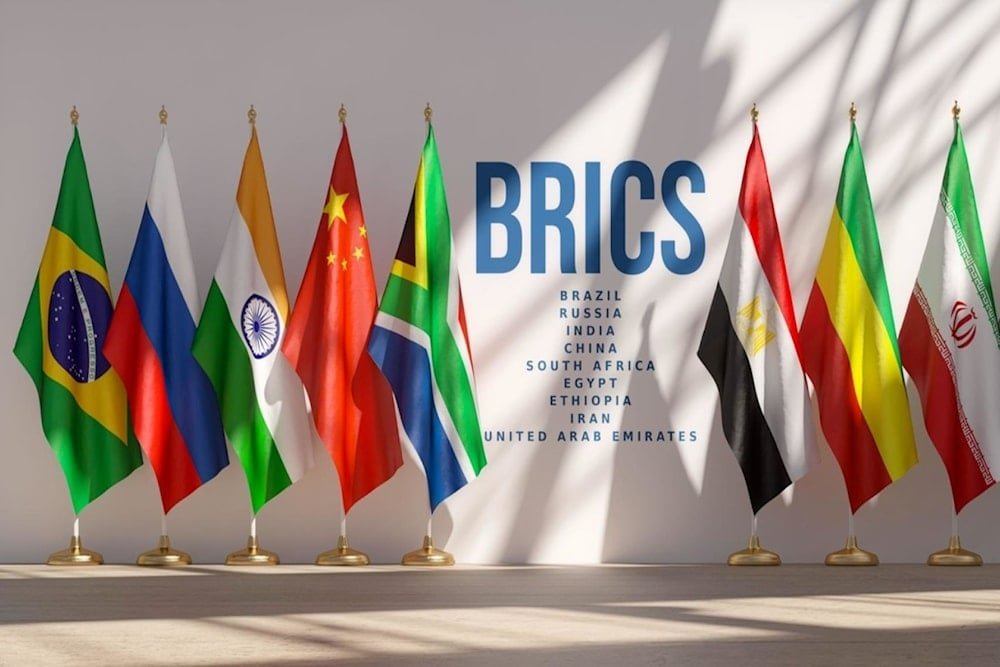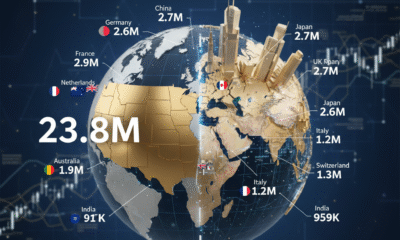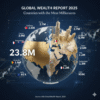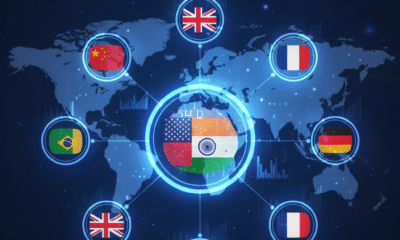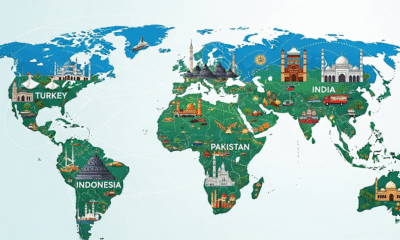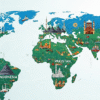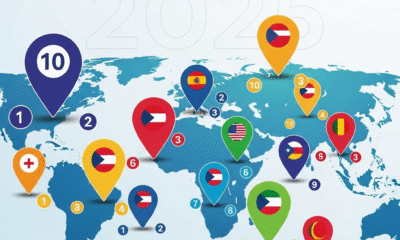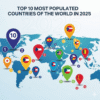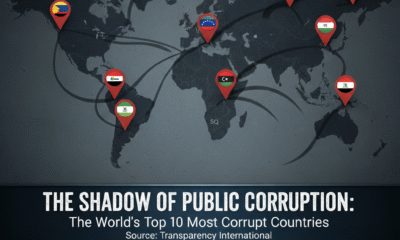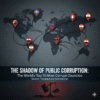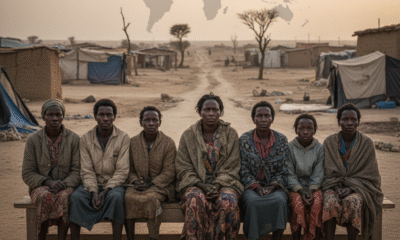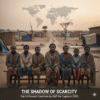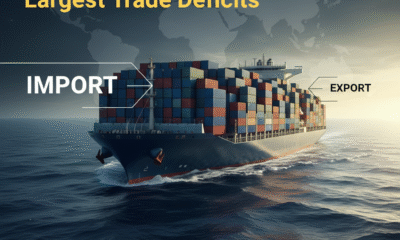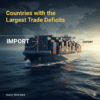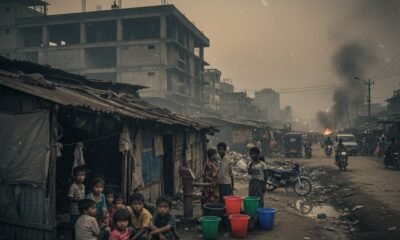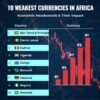Economy
Top 10 BRICS Countries with their GDP in 2025
The group of nations known as BRICS started very small with only four countries including Brazil, Russia, India, and China and South Africa later joined them.
This group formed to boost the economic power and political influence of emerging economies around the world. These countries work together on many global issues.
BRICS has become much bigger in n recent years, as it added new full members. These new additions expand the group’s global reach. They bring more diverse economies into the fold. The combined economic size of the BRICS nations is now huge. This makes the group a major player in the world economy. The new members include Egypt, Ethiopia, Iran, United Arab Emirates, and Indonesia.
- Lawyer accused of defaming Uzodimma spends 25 days in detention
- Six killed, 14 injured in fatal Ebonyi accident
This expansion is important as it shows the growing desire for new forms of global cooperation. The official data from various global financial reports shows the economic strength of each member. This article looks at the Top 10 BRICS full members ranked by their estimated Gross Domestic Product, or GDP, as of 2025.
1. China
China easily leads the list. Its estimated GDP is a massive $19.23 Trillion. China has an ancient history and the modern People’s Republic of China began in 1949. For decades, the economy was centrally controlled.
China started major economic reforms in 1979. This opened the country to foreign trade and investment. It led to extremely fast growth, often called the economic miracle.
Today, China is the world’s largest manufacturer. It is a major global trader. The government now focuses on services, consumption, and innovation for future growth.
2. India
India holds the second position. Its GDP is estimated at $4.19 Trillion. India gained independence from British rule in 1947. The nation first used a state-led approach to industrialization.
India faced economic challenges for decades. Then, in the 1990s, the government introduced major economic liberalization reforms. This move opened the economy to the world.
These reforms led to rapid growth. India is now a global leader in information technology and services. The government aims for high economic growth to lift people out of poverty.
3. Brazil
Brazil is third on this list. Its economy stands at an estimated $2.13 Trillion. Brazil was a Portuguese colony. It became an independent empire in 1822 and a republic later. Its economy relied heavily on agriculture, especially coffee, for a long time.
Structural changes began in the 1930s. Brazil pushed for industrialization to modernize its economy. This focused on producing goods at home instead of importing them.
The Brazilian economy is very diverse today. It is strong in agriculture, mining, and manufacturing. Brazil remains a leading power in Latin America.
4. Russia
Russia comes in fourth place. Its GDP is estimated at $2.08 Trillion. After the fall of the Russian Empire, the Soviet Union operated a centrally planned economy until 1991.
The country then went through a painful move to a market economy. This transition, called “shock therapy,” caused major economic problems in the 1990s.
Russia’s economy later stabilized. It relies heavily on its vast natural resources, especially oil and gas. The government maintains a large role in the economy.
5. Indonesia
Indonesia ranks fifth. Its GDP is estimated at $1.43 Trillion. Indonesia is a vast archipelago nation. It declared independence in 1945 after a long colonial period. Its economy has historically been agricultural.
The government promoted industrialization over the past few decades. The nation also used its rich natural resources. The economy grew fast, but it faced a major crisis in the late 1990s.
Today, Indonesia is the largest economy in Southeast Asia. It has a large, young workforce. The country focuses on manufacturing and digital innovation for continued strong growth.
6. United Arab Emirates
The United Arab Emirates (UAE) is sixth. Its GDP is estimated at $548.60 Billion. The UAE was a group of coastal sheikhdoms called the Trucial States. It was formed as a federation in 1971.
The discovery of oil in the 1960s changed the region forever. Oil revenues funded massive infrastructure development. This created a high standard of living.
The UAE has worked hard to diversify its economy. It is now a global hub for finance, trade, logistics, and tourism. Oil still matters, but other sectors drive growth.
7. South Africa
South Africa ranks seventh. Its economy is estimated at $410.34 Billion. The country’s economy was built on mining, especially gold and diamonds. The strict racial policy of Apartheid ended in 1994.
The post-Apartheid government faced the challenge of integrating the entire population into the economy. They worked to stabilize public finances and reduce inflation.
South Africa is the most industrialized economy in Africa. It has a strong finance and services sector. High unemployment and inequality remain major economic challenges.
8. Iran
Iran takes the eighth spot. Its GDP is estimated at $341.01 Billion. Iran has a long history. Its modern economy grew significantly with the discovery of oil in the early 20th century.
The 1979 Islamic Revolution changed the country’s economic direction. The government controls a large part of the economy. Oil exports became central to government revenue.
International sanctions have strongly affected the Iranian economy for many years. Despite this, the nation has strong industrial and agricultural sectors. The government continues to manage economic pressure.
9. Egypt
Egypt is ninth on the list. Its economy is estimated at $347.34 Billion. Egypt is one of the world’s oldest civilizations. Its modern economy has long relied on the Nile River for agriculture. It became a republic in 1953.
The government at one time strongly controlled the economy. In the 1970s, Egypt started to open up the economy. Revenue from the Suez Canal and tourism became very important.
Today, Egypt focuses on attracting foreign investment. It works to grow its manufacturing and natural gas sectors. The country is a major force in the Middle East and Africa.
10. Ethiopia
Ethiopia completes the top ten. Its estimated GDP is $117.46 Billion. Ethiopia is a very old country. It resisted colonialism for much of its history. Its economy was mostly agricultural for centuries.
The government once followed a state-led development plan. This helped improve infrastructure. The country started to shift toward a more market-oriented economy in recent years.
Ethiopia is one of the fastest-growing economies in the region. It is a major exporter of coffee and other farm goods. The government focuses on large-scale infrastructure and industrial parks to boost manufacturing.

